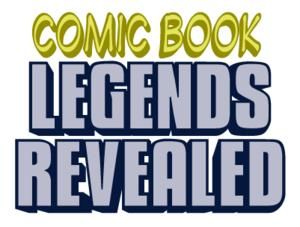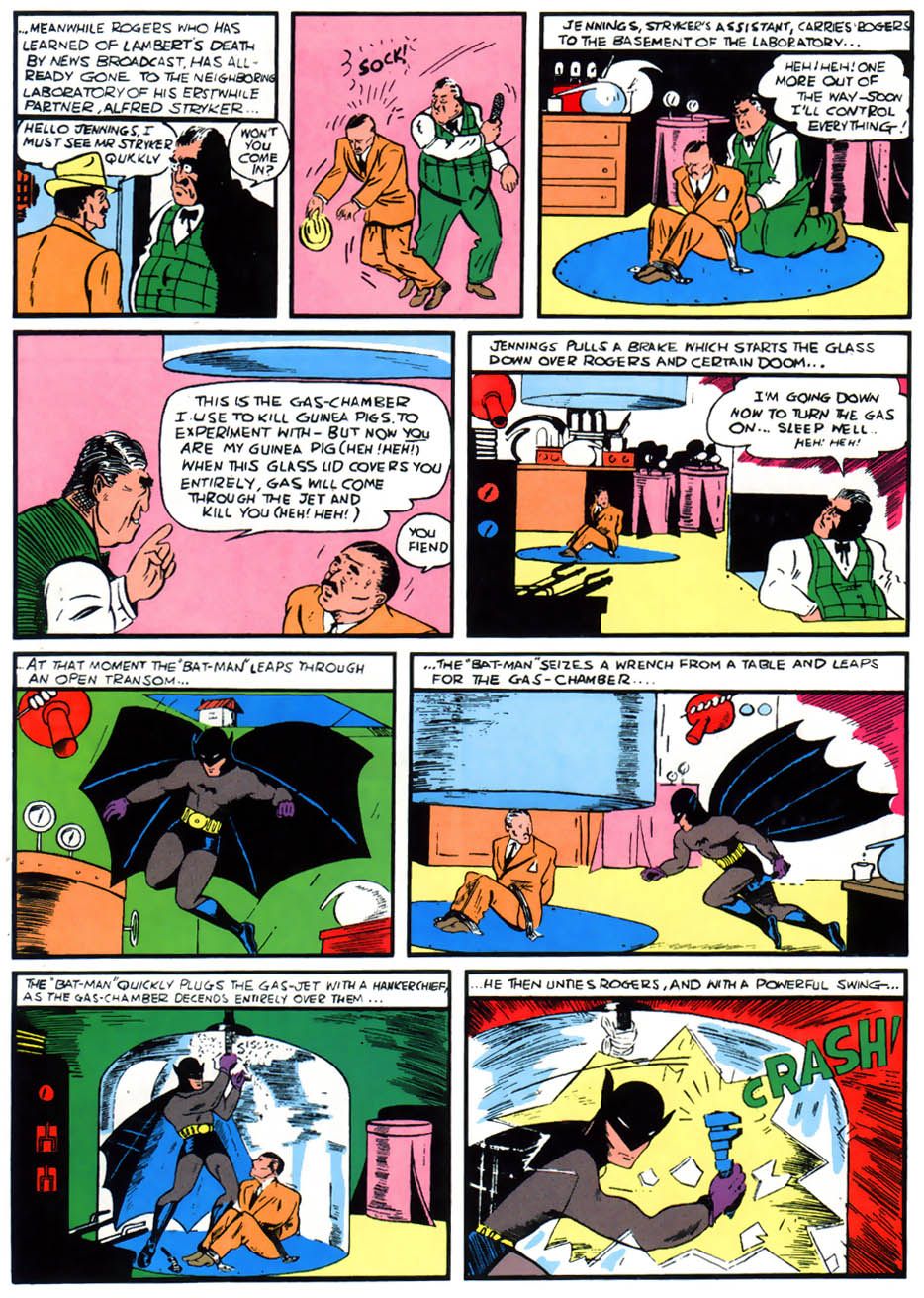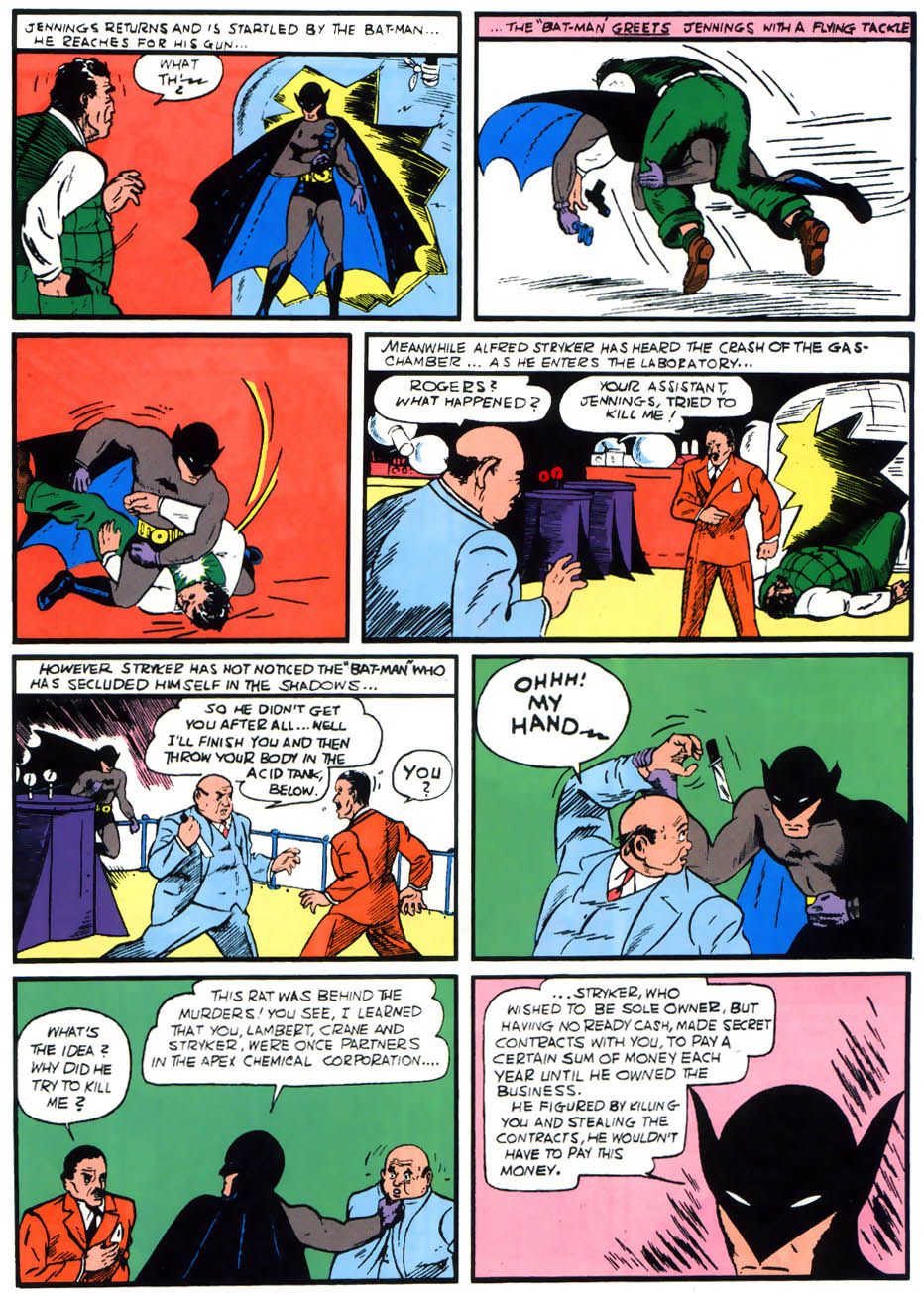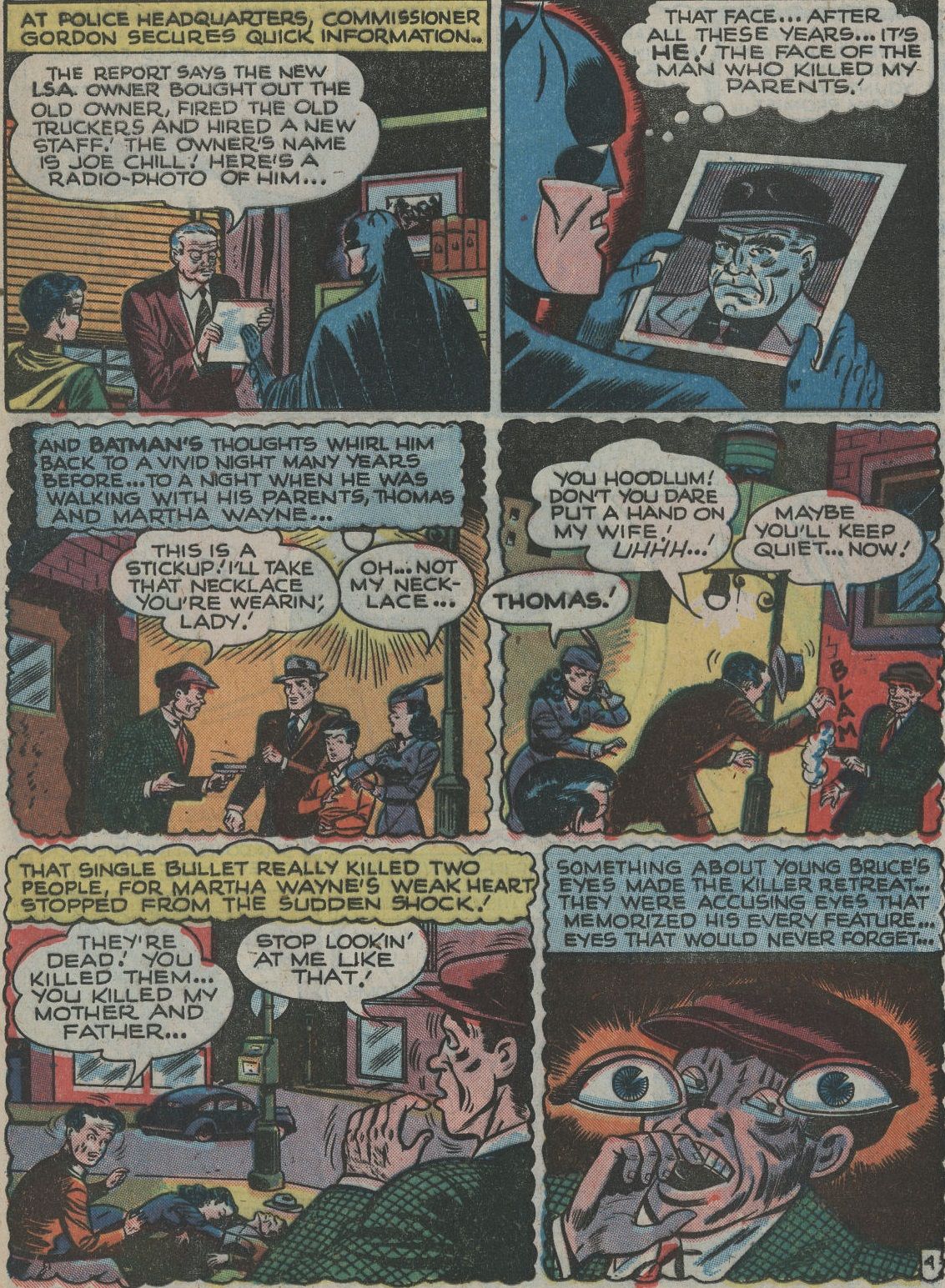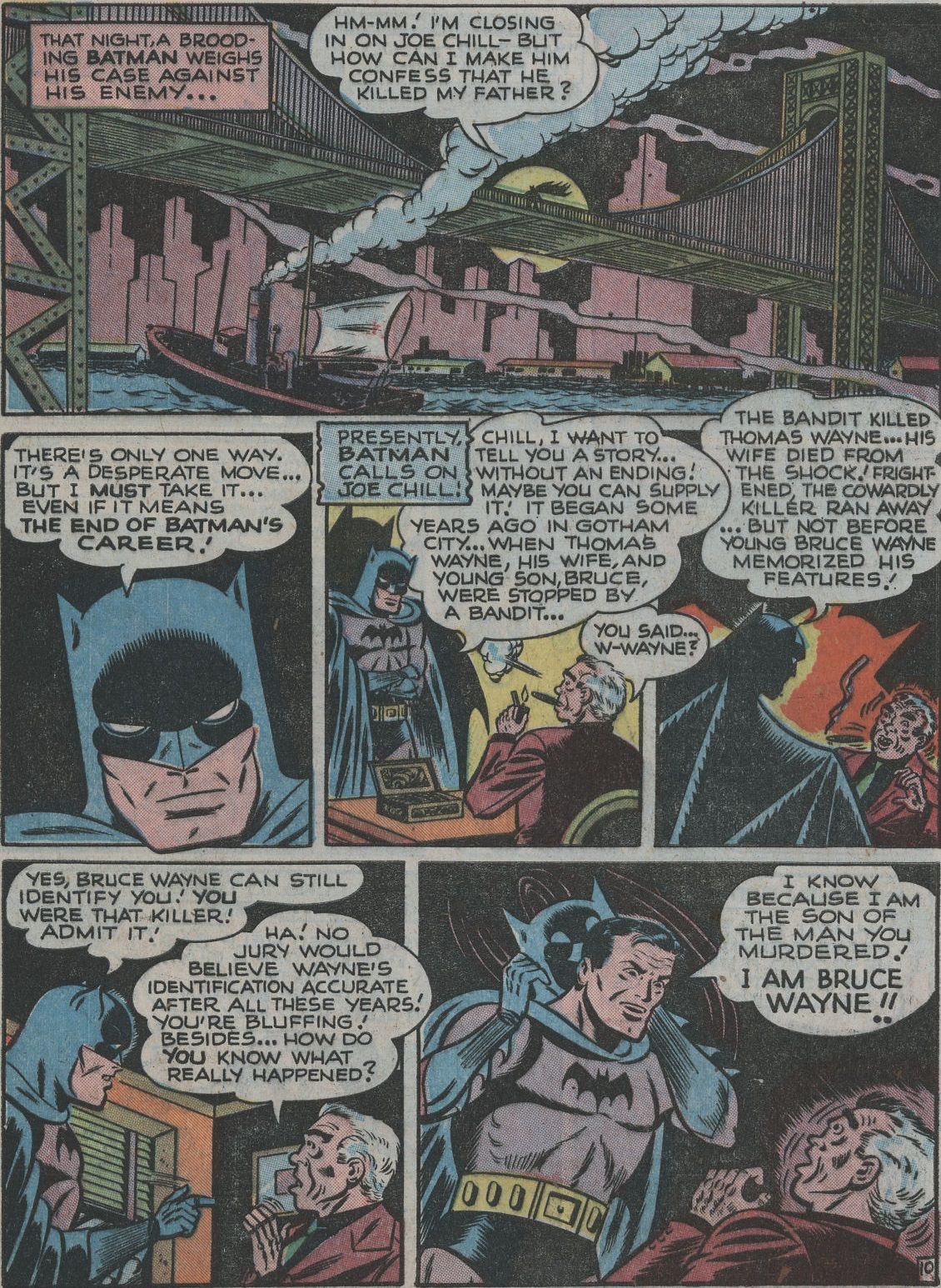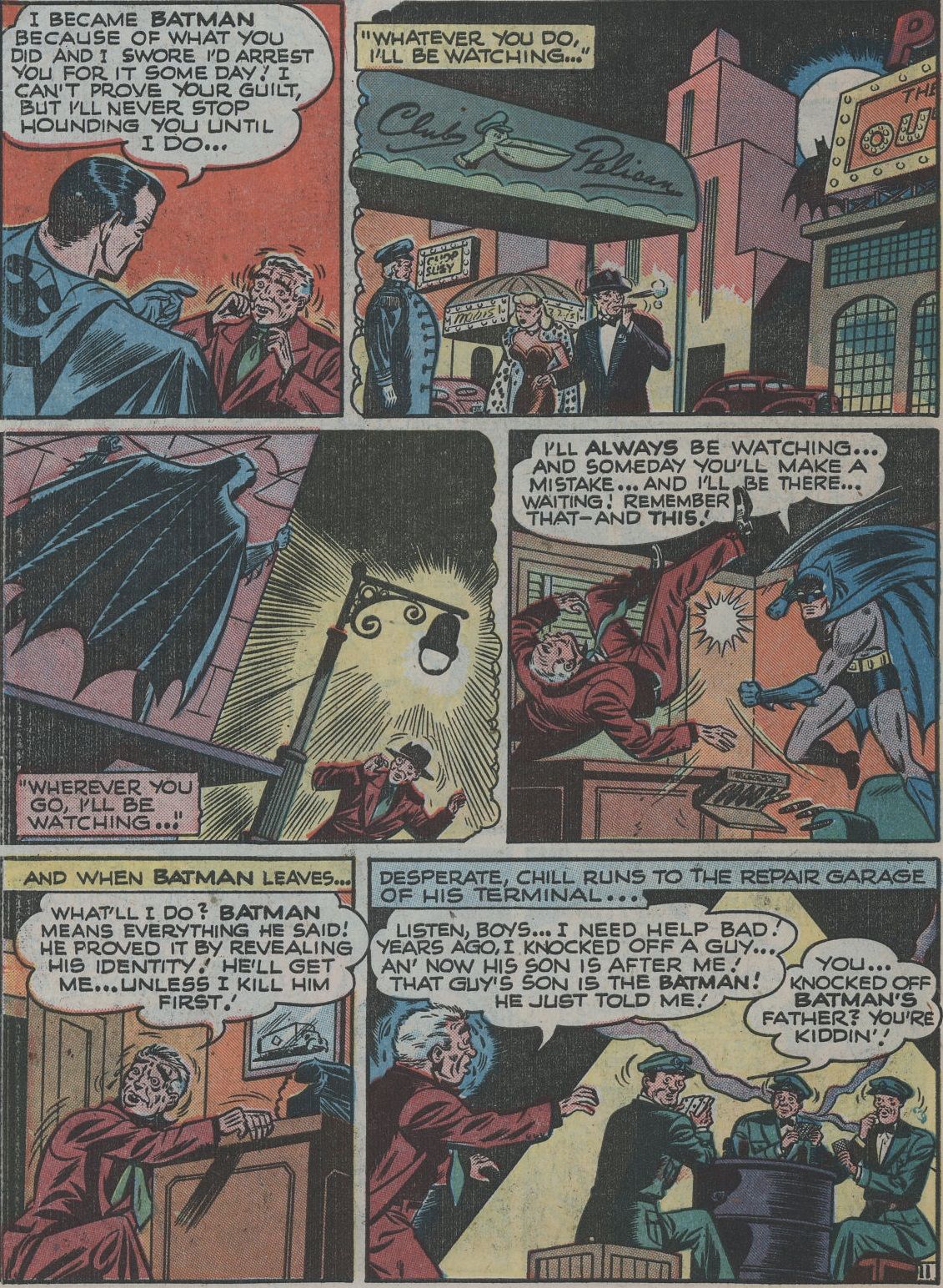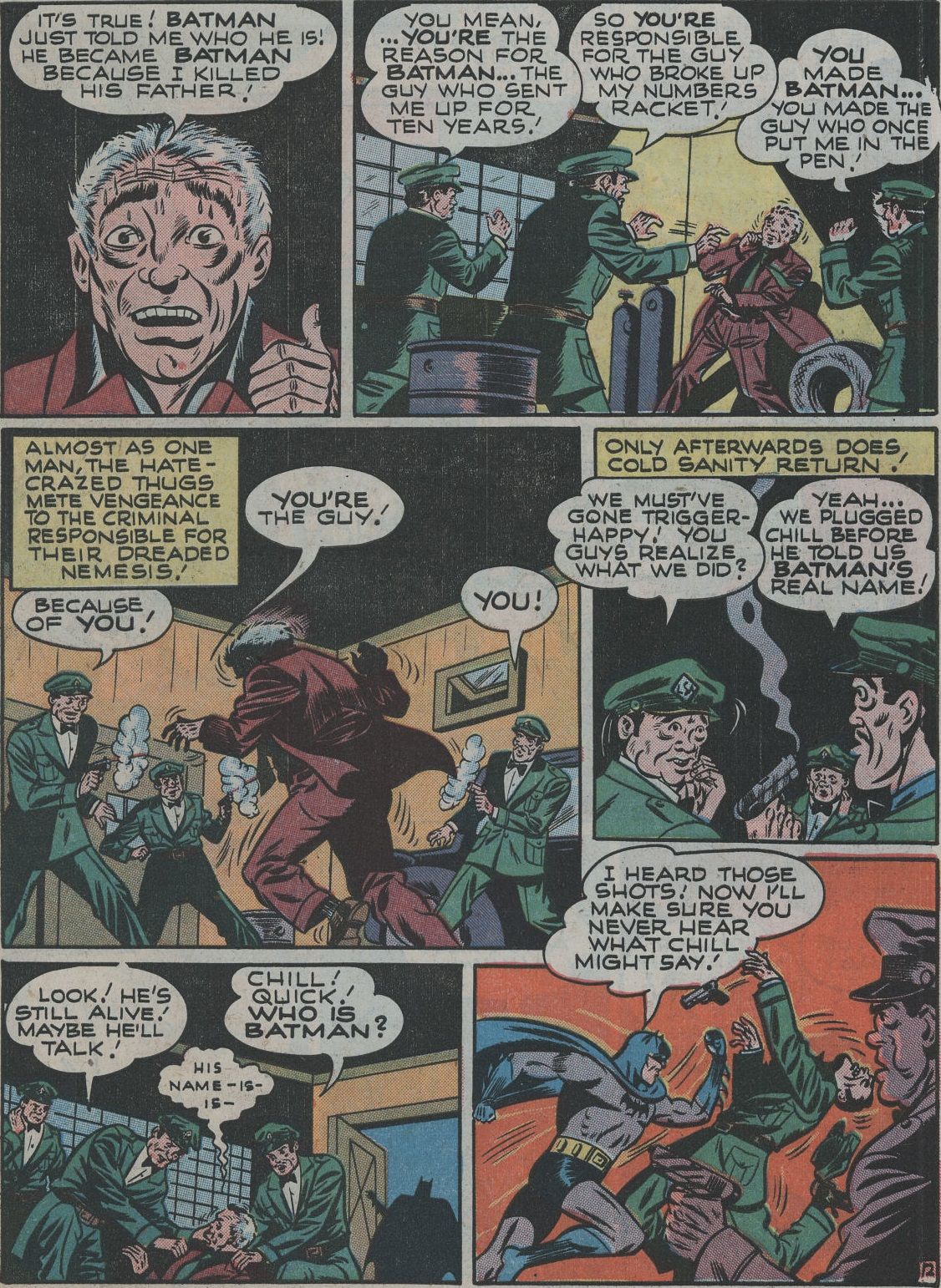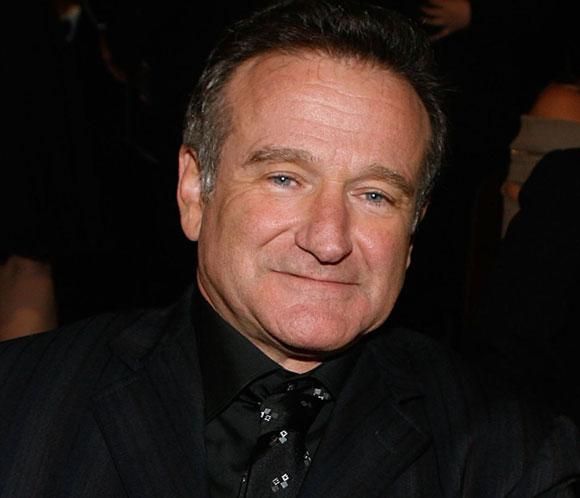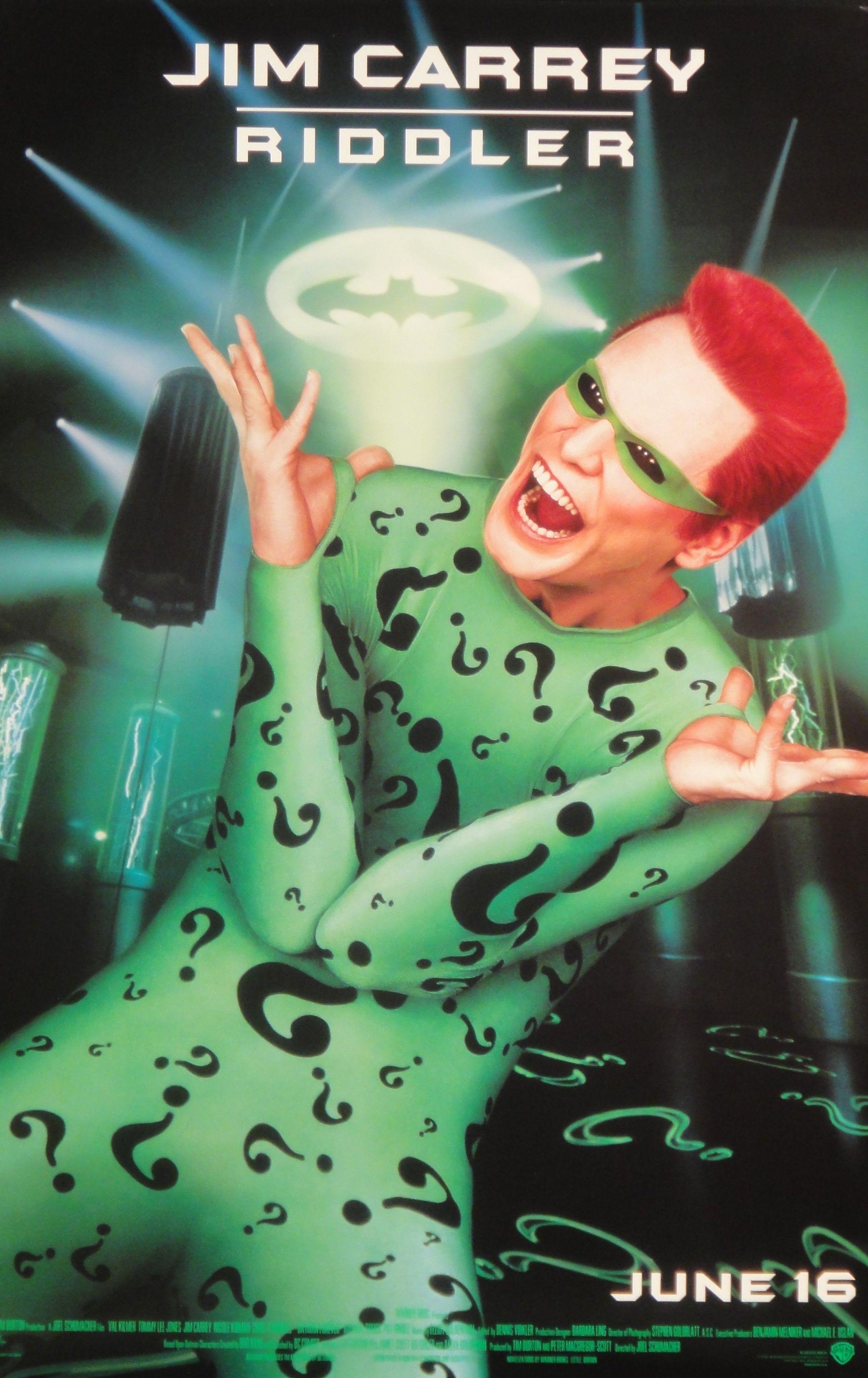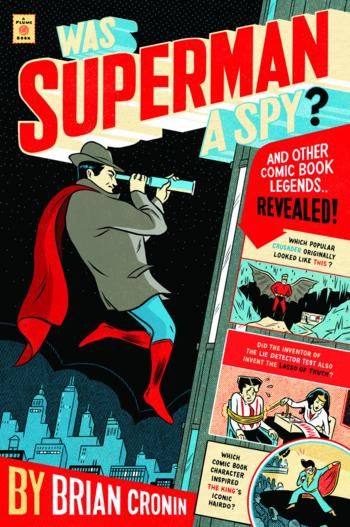Welcome to the four hundred and eighty-fourth in a series of examinations of comic book legends and whether they are true or false. Click here for an archive of the previous four hundred and eighty-three. It's an all-Batman legends edition of Comic Book Legends Revealed this week! First off, was the first Batman comic book story seriously taken from a Shadow story? Did Bob Kane actually draw Batman's confrontation with Joe Chill? And did the producers of Batman Forever fire Robin Williams from the film?
Let's begin!
NOTE: The column is on three pages, a page for each legend. There's a little "next" button on the top of the page and the bottom of the page to take you to the next page (and you can navigate between each page by just clicking on the little 1, 2 and 3 on the top and the bottom, as well).
COMIC LEGEND: The first Batman story was a re-working of a then-recent Shadow story.
STATUS: True
As I have pointed out in the past in Comic Book Legends Revealed, Bob Kane, co-creator of Batman, famously (infamously?) swiped from a couple of different artists for the art on the first appearance of Batman in Detective Comics #27 in 1939. However, interestingly enough, while the artist on that first story ("The Case of the Chemical Syndicate") was swiping from his peers, so, too, was the WRITER of that story, Bill Finger!
Bill Finger was a big fan of the Shadow and in the past he made some references to the fact that his first Batman script was a "take-off on a Shadow story." It was not until less than ten years ago, however, when historians Will Murray and Anthony Anthony Tollin actually discovered the story in question!
It was called "Partners of Peril" from the November 1936 edition of The Shadow magazine.
It was written by Theodore Tinsley, the second-most prolific Shadow writer of the 1930s (after The Shaow's creator, Walter Gibson - both men used the Maxwell Grant pseudonym).
Kent C. Hare boiled down the comparisons really well in a piece on the story here:
Partners in an industrial chemical manufacturing plant seal a secret deal to allow one of them to buy the others out. One – then a second – is murdered! Safes are broken into in search of unknown documents. A mysterious black-cloaked figure contronts a perpetrator on a rooftop above one of the crime-scenes. In a climax, one of the business partners is trapped beneath a clear glass dome to be gassed to death – but the black-cloaked crimefighter saves him by jumping under the dome with him and stuffing cloth into the gas tube to block the poison's entry. It turns out that the mastermind of the murders was the partner who was already buying his fellows' interest out – but who would rather have the business scott free and not pay up!
That is an accurate description of both stories, which is hilarious.
Here are two snippets of the story, plus scenes from the Batman story...
MERRIWEATHER stepped back. Surprisingly, every word he uttered was distinct to the two trussed men inside the glass prison. A cleverly concealed amplifier of great volume carried his voice to the doomed men. "There are four gas vents scattered over the ceiling in this death room. To-night, only one will be used - the aperture in the hollow pipe that leads into your prison. When I release the second trigger, poison gas will flow steadily into your amusing little cheese jar - and you'll know exactly how your friend Reed Harrington died!"
And from the conclusion...
"Yes. But, first, I want you to look at this agreement that was taken from the safe of Simon Todd. Not from the safe in his office which was vainly attacked by Blink Dorgan. This document came from Todd's strong box in his mansion out in the hills. It was found by - by the man who solved this case." He ignored the chief's eager question. From the desk in front of him, piled high with papers strewn alongside an opened briefcase, he selected a typewritten sheet of legal cap and handed it to the police official. The latter read it with absorbed interest. It was a cleverly worded agreement drawn up by Simon Todd, and signed by himself and his former partners in the chemical corporation. It read as follows:
1. At the request of my three associates in the ownership of the Millcote Chemical Corporation, who wish to withdraw from said ownership because of executive differences in policy, the following agreement is signed, witnessed and executed.
2. I, Simon Todd, agree to buy sole ownership of the business; and Reed Harrington, Thomas Porter, and Arnold Kling agree to sell such ownership for the stipulated price of three million dollars.
3. I, Simon Todd, agree to pay annually to each of my former associates the sum of $100,000 for a term of ten years. At the end of ten years the ownership of the Millcote Chemical Corporation is to be mine and mine alone.
4. The heirs of Harrington, Porter and Kling are specifically barred from this agreement. In case of the death of one of the above mentioned associates, his share will be divided equally among the other two survivors. In no event shall less than three million dollars be paid by me.
5. This will constitute acceptance of this contract and a receipt for the first annual payment of $300,000 divided equally among the associates above mentioned.
The document was signed by four names: Reed Harrington, Arnold Kling, Thomas Porter and Simon Todd. Below was the name of the witness, Claude Merriweather. The chief of police uttered a quick exclamation. "In other words, Todd had obligated himself to the extent of three million dollars and would not have complete control of the company for at least ten years." "That is correct," Cardona assented.
JOE explained further. Todd had no intention of discharging his debt. His aim was to seize control of the valuable corporation by killing his associates. That was why he had excluded their heirs from the contract of sale, and had worded it in such a way that, apparently, he had nothing to gain from a sudden death among the doomed men.
Jerry Robinson later theorized that the young Finger was "struggling to shift from humor to adventure strips," hence his use of the prior story as a bit of a crutch.
Thanks to Will Murray and Anthony Tollin for this awesome discovery!
Check out my latest Movie Legends Revealed at Spinoff Online: Did Robin Williams ad-lib so much in Aladdin that the film was no longer eligible for a Best Adapted Screenplay Oscar?
On the next page, did Bob Kane really draw "The Origin of Batman"?
COMIC LEGEND: Bob Kane actually drew the introduction of Joe Chill.
STATUS: I'm Going With True
1948's "The Origin of Batman" was voted as the 22nd Greatest Batman Story of All-Time in our recent Batman poll.
It is a dynamite Bill Finger tale, introducing Joe Chill...
and allowing Batman to finally confront his parents' killer (and the way his killer is dealt with is awesome)...
An interesting aspect of this story is the top notch ART in the issue. The eye bit? That's awesome! The confrontation scene? A great sense of drama there. For years, it has been generally assumed that Bob Kane's main ghost of the time, Lew Schwartz, drew this issue. However, that does not appear to be the case!
Comic book historian Craig Delich discussed the issue with Schwartz, however, before Schwartz passed away a few years ago. Delich and Schwartz went over a series of comics that have been presumed to be Schwartz over the years and Schwartz would confirm most of them as his work (the way he and Kane would work specifically is that Schwartz would pencil the issue in its entirety except for Batman and Robin. For them, Schwartz would just lightly pencil them in so that Kane could then draw them in himself, as Kane wanted to remain at least somewhat involved. Charles Paris would then ink the finished penciled work). With this story, though, Schwartz said that this was all Kane.
Many people think that Kane gave up on the Batman comic feature early on. However, it was more that he gave the series up in 1943 to concentrate just on drawing the Batman comic strip (being a comic strip artist was seen as a much more illustrious job back then). That strip, though, ended in 1946. Kane then returned to DC and did work for the Batman comic book series. In 1947, Kane signed a new deal with DC Comics. It was after this point that Kane first hired an official "ghost artist." After initially having his own studio in 1939/40, throughout the 1940s, the production of Batman art under Kane's name had been taken up by DC Comics (National Comics at the time - I use DC because it's easier) so Kane was not directly involved with ghost artists until his new deal with DC. Lew Schwartz became his personal ghost artist in 1948 until 1953 when Sheldon Moldoff took over. Batman #47 actually came out in the spring of 1948, so it is likely that this story just happened to predate their arrangement (the first story in Batman #47, a Catwoman tale, was actually the very first story Schwartz drew as Kane's ghost artist).
Thanks to Craig Delich for his awesome research work!
On the next page, was Robin Williams fired from being the Riddler in Batman Forever?
COMIC LEGEND: Joel Schumacher fired Robin Williams from Batman Forever and replaced him with Jim Carrey
STATUS: I'm Going With False
The late Robin Williams was a big comic book fan and he had been attached to Batman films for years.
However, this past week I've seen a number of reports that talked about how Williams was offered to play the Riddler but Joel Schumacher took the offer away to cast Jim Carrey instead.
The most popular citation for this is, naturally enough, Williams himself, who had a great bit in Empire Magazine in 2010 about wanting to work with Christopher Nolan on a future Batman film (they had worked together on the 2002 film Insomnia).
"But back to Chris Nolan. The extraordinary thing about him is that he’s still growing as a director. The Batman films engage you so heavily as a viewer because the detail is all there. Even the small characters are interesting, and you can absolutely see how Heath Ledger could create a character as crazy and fascinating as The Joker with a director like Chris, who’s totally in control but lets you go wild.
"I would work with Chris again in a second, playing anyone in anything. I’d play The Riddler in the next Batman, although it’d be hard to top Heath as the villain, and I’m a little hairy for tights. Plus, the Batman films have screwed me twice before: years ago they offered me The Joker and then gave it to Jack Nicholson, then they offered me The Riddler and gave it to Jim Carrey. I’d be like, “Okay, is this a real offer? If it is, then the answer’s yes. Don’t pump me again, motherfuckers.”
"I’m using this article as an ad. Chris, call me, I’ll do anything. I could be a great character — or some weird little man in the background in Arkham Asylum."
For the Joker reference, it seems a bit iffy as to whether Williams was ever officially offered the part, but the producers of Batman definitely discussed the role with Williams, but only to compel Jack Nicholson into taking the role ("If you don't sign on, we're going to move on with Robin Williams" - that sort of thing). It worked, as Nicholson quickly signed on after they started talks with Williams.
The Riddler, however, is a different story. It is true that the Riddler in Batman Forever was Williams' part for the taking, from when Tim Burton was doing the film through when Joel Schumacher took over the movie.
What Williams was mistating, though, was HOW he left the film. It might be very true that Schumacher was HOPING that Williams would leave so that he could sign the younger "hotter" Jim Carrey, but it was Williams who ultimately turned down the role. He was not fired from the role.
The film was in a lot of flux at the time, with Michael Keaton unsure whether HE would return to play Batman for Schumacher (he ultimately decided not to). According to Entertainment Weekly at the time, WIlliams' problem was that
He believed the character was too intellectual and not as comedic as the Riddler played by Frank Gorshin on the TV series." Williams was reportedly also concerned that his Riddler would be overshadowed by the film's other Bat-foe, Harvey (Two-Face) Dent, especially after Tommy Lee Jones was cast in the role.
Other reports also stated that Williams was unhappy with Warner Brothers over how they handled his 1994 film Being Human (as I've pointed out in a past Movie Legends Revealed, when Williams was unhappy with a studio, he was not shy about letting them know).
In the end, for whatever the reason, Warners eventually gave him a deadline to make up his mind and he decided not to do the role. They then quickly moved on Carrey.
It would have been fascinating to see Williams' take on the character.
Okay, that's it for this week!
Thanks to the Grand Comics Database for this week's covers! And thanks to Brandon Hanvey for the Comic Book Legends Revealed logo!
Feel free (heck, I implore you!) to write in with your suggestions for future installments! My e-mail address is cronb01@aol.com. And my Twitter feed is http://twitter.com/brian_cronin, so you can ask me legends there, as well!
Here's my newest book, Why Does Batman Carry Shark Repellent? The cover is by Kevin Hopgood (the fellow who designed War Machine's armor).
If you want to order a copy, ordering it here
gives me a referral fee.
Follow Comics Should Be Good on Twitter and on Facebook (also, feel free to share Comic Book Legends Revealed on our Facebook page!). Not only will you get updates when new blog posts show up on both Twitter and Facebook, but you'll get original content from me, as well!
Also, be sure to check out my website, Urban Legends Revealed, where I look into urban legends about the worlds of entertainment and sports, which you can find here, at urbanlegendsrevealed.com.
Here's my book of Comic Book Legends (130 legends - half of them are re-worked classic legends I've featured on the blog and half of them are legends never published on the blog!).
The cover is by artist Mickey Duzyj. He did a great job on it...(click to enlarge)...
If you'd like to order it, you can use the following code if you'd like to send me a bit of a referral fee...
Was Superman a Spy?: And Other Comic Book Legends Revealed
See you all next week!

